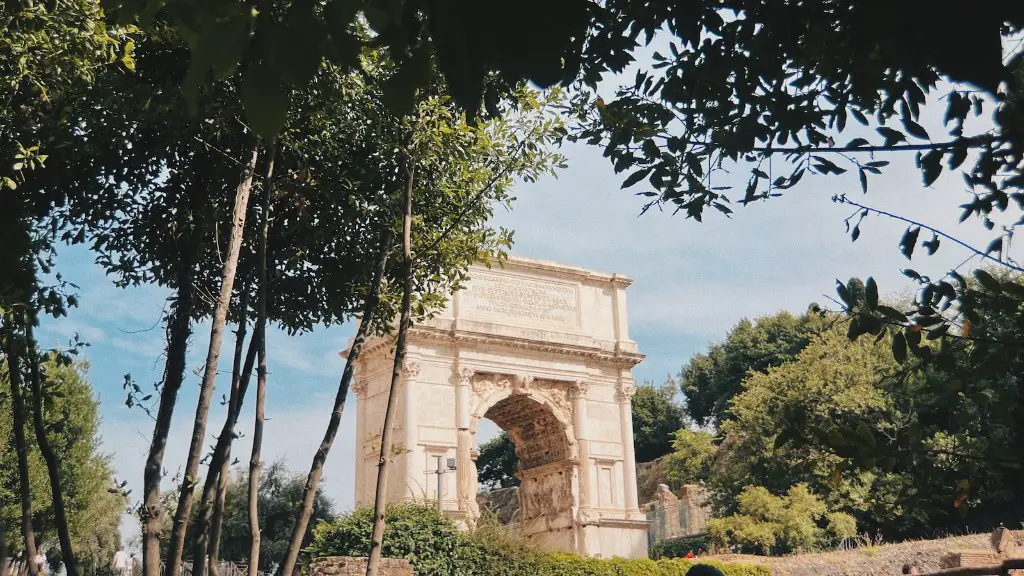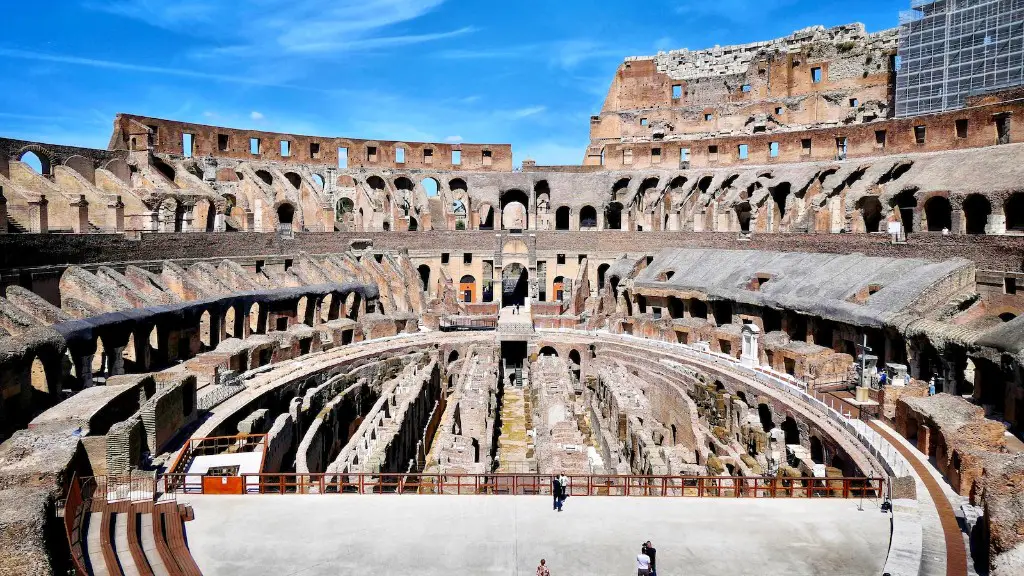The Roman Republic and the Roman Empire had a complex social structure that was highly stratified. In ancient Rome, there were four distinct social classes: patricians, plebeians, freedmen, and slaves. Though they were part of the same society, each group was in different levels of power and status.
The Patricians were the wealthiest, most powerful members of Roman society. As the descendants of the Roman aristocracy, they held the highest political offices, most of the land, and had exclusive legal and religious privileges. Patricians were also typically wealthy, which gave them the privilege to purchase large landholdings and become influential within their communities.
The Plebeians, also known as Plebs, were the majority of the citizens in Rome. Though they had fewer rights than the Patricians, they were still considered Roman citizens, able to vote and act in the Roman courts. Plebeians typically worked as artisans, shopkeepers, laborers, or farmers and often lived in modest housing.
The third class of individuals was the Freedmen, the descendants of former slaves. They were granted rights similar to those of the Plebeians and could own land or pursue their own business. Freedmen were also able to move up in their class xand achieve the same level of prosperity and influence as the Patricians.
The last social class was the Slaves, who were owned by the Patricians and Plebeians alike. Slaves were not recognized as citizens and had no legal or political rights. Though they could marry and own personal property, they were expected to obey their masters without question.
It is important to note that these four classes were not static; changes happened over time. As the Roman Empire expanded, more citizens became part of the middle class, which increased the power of the Plebeians. When the Republic fell and the Empire was established, the Patricians became the sole rulers of Rome with new laws that gave them more authority.
Political Power of the Classes
The political power of each social class also changed over time. Though the Patricians held the majority of the power, they were restricted in the areas they were allowed to influence. The Plebeians, who were considered to be the middle class, had the right to vote and could serve on the Roman Assembly. The Freedmen and Slaves had no political authority, but their productivity enabled the Patricians to maintain the military, government, and social institutions.
One of the major barriers that held back the Plebeians was their lack of wealth and influence. Though they were allowed to serve in the Assembly, they were not given the same rights as the Patricians and were often excluded from public offices. The Plebeians attempted to amend this by making alliances with prominent Patrician families, which allowed them to increase their political power and authority.
The Freedmen and Slaves, who were excluded from political involvement, attempted to gain more rights by revolting against the government. These revolts often failed, as the Patricians and Plebeians were able to quell the violence and maintain control.
The social structure in ancient Rome was complex and highly stratified. Even though each social class had different rights and privileges, they still lived in the same society, sharing the same values and culture. Also, it was possible to move between the different classes, as long as one had the necessary resources and influence.
Cultural Impact of the Classes
The four social classes in Rome impacted the culture and the identities of the people as they had access to different aspects of Roman life. For instance, the Patricians had access to education and were better informed regarding Roman history and literature, giving them an upper hand in public discourse.
The Plebeians, Freedmen and Slaves, on the other hand, had limited access to education, but could still be found participating in events such as theatre, gladiatorial games, chariot races, and other forms of popular entertainment. These activities allowed them to express their beliefs and gain a sense of belonging within the Roman Empire.
The Roman social structure also had an impact on the way people interacted. Since Patricians were at the top of the stratification, they were usually treated with more respect and had more freedom to express their opinions. Plebeians, Freedmen, and Slaves, on the other hand, were generally expected to show deference to their social superiors.
The social classes in Rome also had various religious roles. The Patricians were able to access the most influential religious roles such as pontiffs, augurs, and vestal virgins. The Plebeians, Freedmen and Slaves, on the other hand, had more limited roles and were mainly restricted to providing sacrifices or attending festivals.
Impact of Social Classes on Modern Society
Though the Roman social structure is no longer in existence, it continues to have an impact on modern society. The concept of social hierarchy, which is still seen in many countries today, is derived from the four classes in ancient Rome. In addition, notions such as “Stay in your lane of class” or “Stick to your station in life” are reflections of the stratification system in ancient Rome.
Furthermore, the legacy of the Roman social structure can be seen in the form of public policy. Contemporary governments are still looking to social classes to provide guidance on how taxes and services should be allocated. Additionally, modern discourse on democracy is often a reflection of the struggles between the Patricians and Plebeians during the Roman Republic.
The four distinct social classes in ancient Rome may have disappeared, but their legacy continues to have an impact on the world today. From issues such as taxation and public policy to debates on democracy, the legacy of the Roman Empire still influences the values and beliefs of today’s society.
Effects of Social Mobility
The social mobility of the different social classes in ancient Rome impacted both the culture and politics of the time. As the Roman Empire expanded, more individuals were able to move up in their class and achieve the same level of power and influence as the Patricians. This, in turn, created a larger middle class and eroded the traditional power held by the Patricians.
The increased mobility also had an effect on the politics and economics of the empire. As more individuals were able to access different levels of power, the Patricians had to create new laws and reforms to maintain their authority. This led to a shift in taxation and public policy and ultimately, allowed the Plebeians to gain a greater level of influence in public discourse.
The effects of social mobility can be seen in our own society, as individuals are increasingly able to move up the social ladder. We have seen the rise of a bigger middle class, as more people are able to access higher levels of education and higher-paying jobs. This has allowed for more freedom and greater opportunities for individuals to accomplish their dreams and make their lives better.
Characteristics of the Social Classes
The different social classes in ancient Rome had distinct characteristics and qualities that set them apart from one another. The Patricians, for example, were the wealthiest and most powerful members of society and had access to the highest levels of social, political, and religious power. The Plebeians were the majority of the citizens and had the right to vote and serve on the Roman Assembly but had less wealth and influence than the Patricians. The Freedmen and Slaves had no political authority, but they were still able to contribute to the economy and culture of the Roman Empire.
The characteristics of the social classes in ancient Rome continue to be reflected in our modern society. The social structure that we see today is a continuation of the class system that was used in Rome, and as such, individuals are still subjected to the values, beliefs, and power structures that governed Roman society.
Though the different classes have changed over time, the underlying principles remain the same. The wealthiest and most influential members of society are still at the top of the social hierarchy and their power and influence are still reflected in our society today. Meanwhile, individuals who are less privileged are still subject to the same power structures, accessing fewer rights and opportunities.
Conclusion
The four distinct social classes in ancient Rome had a significant impact on the culture, politics, and economy of the time. These classes were stratified, but it was still possible to move up and down between them. This allowed individuals to access better educational, political, and social opportunities, as well as a greater level of freedom and influence.
The legacy of the Roman social structure continues to have an impact on today’s society. The notion of inequality, wealth disparity, and the power and influence of the wealthy are all reflections of the social classes in ancient Rome and continue to manifest in different ways in our own society.





